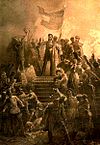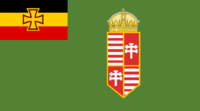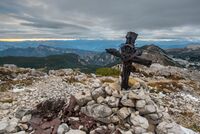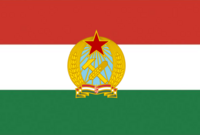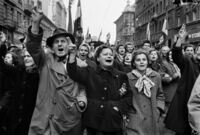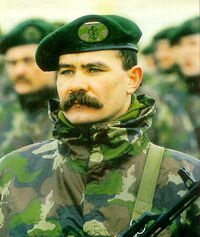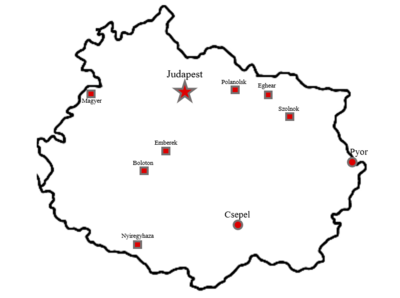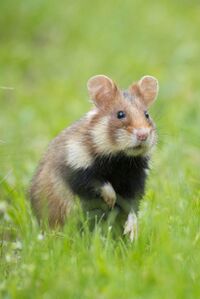Old Lyonheimer HIstory
Lyonheimer Magylonheimerzstág
Other:
| |||||||||||
|---|---|---|---|---|---|---|---|---|---|---|---|
| Motto: "Dicsőség földjeinknek" "Glory to Our Lands" | |||||||||||
| Anthem: "Himnusz" | |||||||||||
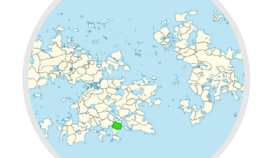 | |||||||||||
| Capital and largest city | Judapest | ||||||||||
| Working languages | Hungarian Lyonheimerish | ||||||||||
| Recognized Regional Languages |
| ||||||||||
| Ethnic groups | Uralic, Ugric, Germanic | ||||||||||
| Demonym(s) | Lyonheimerman/Lyonheimerish | ||||||||||
| Government | Parliamentary Representative Republic | ||||||||||
• Prime-Minister | Horvath Szbolazai | ||||||||||
• Vice-Minister | Yuki Tsunoda | ||||||||||
| Legislature | The Lyonheimmer Second Parliament. | ||||||||||
| Establishment | |||||||||||
| ≈ 970-1723 | |||||||||||
| 1723-1905 | |||||||||||
| 1905-1911 | |||||||||||
| 1911-1937 | |||||||||||
| 1937-1964 | |||||||||||
• Kingdom of Lyonheimer | 1964- | ||||||||||
| Area | |||||||||||
• Total | 505,498 km2 (195,174 sq mi) | ||||||||||
| Population | |||||||||||
• 2021 estimate | 28,712,900 | ||||||||||
• 2014 census | 28,211,100 | ||||||||||
| Currency | Lyonheimerish Fornit (FOR) | ||||||||||
| Time zone | UTC-1 (UTC -1) | ||||||||||
| Date format | dd-mm-yyyy | ||||||||||
| Driving side | right | ||||||||||
| Calling code | +36 | ||||||||||
| ISO 3166 code | LYO | ||||||||||
| Internet TLD | .LY | ||||||||||
Lyonheimer (Hungarian: Magylonheimerzstág) is a parliamentary representative republic in southern Thrismari. It borders Toubaze to the north, the Kingdom of Blechingia and Medovia to the north west and Greater Tralka to the south. With around 28 million inhabitants, Lyonheimer is a medium sized centrist kingdom. The official language spoken in the nation is Lyonheimerish, however only an estimated 200,000 people even know how to speak the language and most speak Hungarian. Lyonheimer's capital, and largest city is Judapest. Some other urban areas include Csepel, Emberek and Pyor. The current leaders of the nation are acting Prime-Minister Horvath Szbolazai, and the Head of State is King Faveskas Orban. The country scales at 505,498km2 and the highest point is 5,281m (Mount Varsaves). Lyonheimer uses the Lyonheimerish Fornit as the currency in the nation. Lyonheimer was called the Krenyan-Lyonheimer empire for around 6 years from the mid 1905 to 1911. While under Krenyan occupation, they participated in the Great War and fought on the Southern Front for the Iron Pact.
Lyonheimer are known for their uniqueness amongst Southern Thrismari. The nation has a completely different language and culture to that of their neighbours and other nations, making communication throughout history difficult. The people of Lyonheimer originate from mountainous regions of Sarussia, and an early people known as the Hungs. This culture difference makes the language spoken in Lyonheimer very difficult for others to learn, and hard for people from Lyonheimer to learn other languages too.
Lyonheimer was called the Krenyan-Lyonheimer empire for around 6 years from the mid 1905 to 1911. While under Krenyan occupation, they participated in the Great War and fought on the Southern Front for the Iron Pact. The nation gained it's independence following the Great War when the Alliance decided to turn Krenyan-Lyonheimer into a new sovereign nation run by democracy, commonly known as the First Kingdom of Lyonheimer. The government has changed twice since then, however remained the same state.
On the national stage, Lyonheimer are considered a middle-global power. It has a high-income economy and ranks "very high" in the Human Development Index, with citizens enjoying free universal health care and tuition-free secondary education. As well as this, Lyonheimer are 'Free' according to the Freedom Index, only experiencing slight noticeable press issues. Lyonheimer is a member of the Thrismari Union, a league of nations in Thrismari that aim for continental peace. On the global stage, Lyonheimer is recognised as a middle-global power, due to history and modern presence. Lyonheimer are also a member of the Anterian World Assembly as well as The International Court.
Etymology
The name Lyonheimer comes from two words, Lyon and Heimer. To begin with, Lyon is a word for bravery and stability that a lot of people use in Lyonheimerish. Heimer is interesting as it is the surname of country legend Alfred Heimer who founded the Judapest and lead people to where the nation is today
History
BC
Evidence of small Neanderthal tribe-like communities has been found in, what is now, Western Lyonheimer, near the Lake Aedratic. These early men left behind small tools, such as flint headed axes and longbows. Small stone shacks along the river can still be seen, along with small cave civilizations. Some evidence from this time suggests these early men had small civilizations, and perhaps would have traded or warred with each other. These early men were believed to have left to the north in the most recent ice age, as Lyonheimer would have average temperatures of -80 degrees Celsius, which would have been unliveable for these people.
In 2000BC Germanic tribes arrived in the region, originating from modern central Thrismari and stayed in the region up until the Hung dynasty invaded on horseback in 1600BC and took the lands using the vast Lyonheimerish plains to their advantage with their cavalry. The Hungs used Lyonish Bows, a superior technology at the time, to take the land from the Germanics with ease, slaughtering most.
The Hungs originated from mountainous regions in Thrismari and brought with them their Uralic culture, which modernised the lands with their technologies such as the Lyonish Bows and Lyonish Half Armour which were both used for centuries.
AD
The Blechingians knew little of the Hungs that lived in the region and assumed the people to be weak and uncivil. An army lead by Alfred Heimer entered the nation and without any resistance managed to claim the land for the Kingdom of Blechingia. The Blechingians gave the region the name East Blekinge, however it operated as an autonomous state instead of a region of Blechingia with its own Monarchs as the Blechingian Royal Family knew it would be too much to run the region.
Alfred Heimer and his settlers made their home in-between the mountains for good irrigation. They called this settlement Judapest, which to this day remains the capital of the region.
Alfred Heimer's project at the time was to build a cathedral, this would be the center-piece of the city. He spent 15 years building the cathedral, as he was an extremely religious man who believed that, if he built it on his own, he would be accepted into heaven. The church was built out of the limestone in the area, which the place had a lot of. After the 15 year build progress, he completed the cathedral, which stands to this day as one of the landmarks of Lyonheimer. Alfred Heimer, as the first leader of the people, made the life great for the ethnic Uralics, despite having taken their land by force it seemed as they took a liking to him and the way he improved the lives of the people drastically.
Despite the request of the Blechingi royal family, most of the people living there called the region 'Lyonheimer' after the leader of their land that made the lands a better place, as well as 'Lyon' which is 'Brave' in Lyonheimerish, a now dead Uralic language. Most citizens lived in small farms, villages, hamlets and towns at this time. Heimer passed away at some time around 1110 and was honoured by the Catholic Church by being a Saint. Following the death of Alfred Heimer, the famous Orban family inherited the throne and still remain as the Royal Family of Lyonheimer to the present day. The first Orban king was Stephen Orban I, who ruled very similarly to Alfred Heimer, appealing to the ethnics and the Blechingians. It was at this time that it was incorporated into the Holy Gothic Empire.
This was seen as the best time in the nations history, people focused on culture, cuisine, improvement and they were not threatened by war, despite not being as funded as the rest of Blechingia.
These times were overall uneventful for the region as people enjoyed early medieval life. Towards the end of this 'era' people began to move into the large cities as it became a real benefit financially and socially to do so.
Dark Ages
The Dark Ages started at the same time period as the rest of the Kingdom of Blechingia's Dark Age in the 1400s, and ending a bit after theirs in the 1600s. It started with very unfortunate circumstances, the Heratic Plague spread through Lyonheimer, starting in hamlets, villages, farms and towns but advancing to Judapest, the main city at the time. As people had began to move more into cities previously, the Plague hit Lyonheimer extremely bad. It began to spread like wildfire within the nation. Symptoms of the Heratic Plague include, itchy skin, rashes, vomiting and extreme stomach ache. After around three days the virus would have killed a majority of the people who got it. The virus became a real problem in the city, because of the close quarters housing it was a real problem. The virus lasted for around a hundred years killing almost half of the countries populations and to this day is one of the worst plagues Anteria has seen. This gave this time-period the name 'The Dark Ages'.
Torture was a common punishment for those who did not follow these laws. Some methods of torture used include flogging, rat torture and iron chair torture.
Life was also not easy for the people of the nation at this time, being one of the poorest periods under a corrupt, greedy run of monarchs. Most people seemed happy, despite the situation.
This age wouldn't last long, however as once the virus was killed, doctors became more efficient and quality of life increased with Lyonheimer being the first nation to use handwashing in medicine.
Middle Ages
At the time Lyonheimer was a member of the Holy Gothic Empire. The nation was made up of four independent duchies, the Duchy of Pyor, Duchy of Pest, Duchy of Csepel and the Duchy of Boloton which were all puppet states of the HGE. The Holy Gothic Empire was extremely unstable and corrupt, even with it's height being during the middle ages. The majority of the Emperors were of Blechingian heritage which left unrest in the other states of the empire.
The time was fairly prosperous under the empire's protection though, with it being a great power in the area. The people of the nation were happy with semi-independence within the Holy Gothic Empire for the first time in hundreds of years.
Krenyan Occupation Age and the Revolutionary War
The sudden collapse of the Holy Gothic Empire left extremely turbulent effects on all of the nations involved in the empire. This gave the colonial powerhouse of Krenya an opportunity to take the land for themselves.
Lyonheimer was ruled by the harsh fist of the Krenyans shortly after the Dark Ages. Due to inner struggle with the Blechingian royal family, mixed with turmoil of the plague meant that Krenya could easily bring it into occupation. The treatment of citizens in Lyonnheimer was not great, the Krenyans used Judapest, particularly, as a slave location, enslaving all sorts of lower class Lyonheimermen. However after the Judapest Revolt, Krenya ceased to keep slaves for a while. The Krenyans used Lyonheimer for industrialisation, starting the construction of many different things and, in some ways, helping the nation advance technologically after the Dark Ages. One of these was gunpowder, the use of cannons, muskets and flintlock pistols. These would come in handy during the Thrismari Revolutionary War.
In 1802, slaves from Pyor, the largest port city in the nation, had enough of this mistreatment by the Krenyans and began an uprising claiming independence from Lyonheimer (known as East Blekinge at the time) and becoming the second Rebellion force in the Thrismari Revolutionary War after New Blekingia. The soldiers of Lyonheimer joined the Coalition forces with Blechingia to fight together against the two rebellions. At the beginning of the war, the Lyonheimerish thought that they could simply invade Pyor, taking it back and ending the rebellion fast. The battles would be fought in large fields, with one team on either side and they would shoot in an orderly fashion until one comes out on top. Cavalry was Lyonheimer's strong point as well as cannons which they used in unison to combat the Pyor soldiers. The cavalry is said to have originated from the times of the wandering Uralics who found the lands. Lead by Queen Lili I, they tried to invade them and it failed miserably, to the point where they pushed them back all the way to the city of Judapest, and the Siege of Judapest began.
A decisive victory for Lyonheimer and the Coalition, with confidence they managed to push the Rebellion back into surrender and winning the war ultimately.
After the war, Lyonheimer did not advance much at all technologically, as the lands were recently at war so Krenya did not see them as useful anymore. Roads were poor quality and railways were non existent. TheKrenyan Duke's would sometimes visit while on holiday in Thrismari
Krenyan-Lyonheimer Empire
Krenya declared that Lyonheimer was no longer part of Blechingian and now its own 'independent', and decided to rename it the Krenyan-Lyonheimer Empire. the Grand-Duke signed the declaration for the nation, and it became a puppet state of Krenya 'run' by the monarch who previously had power. Krenya only really had this idea as they noticed a large amount of expensive metals in the region and the amount to run such a large land would be.
They remained in this state until 1905, the year beginning the Great War, where officials from Krenya sent a written telegram to Judapest which stated that they must prepare to go to war with Blechingia and the alliance.
At the beginning of the war, the attitude of the people was upset, yet patriotic, as many Lyonheimerish people had family and friends in Blechinigia, which upset a lot of people. However, many joined the war anyway, seeing it as an adventure of a lifetime, due to the fact none had experienced anything quite like it before. A document from the military at the time suggests as many as 800,000 men signed up to join the military in 1905, on the brink of war. With little to no training, men were sent to fight on the Southern Front.
The conditions that the soldiers were living in was awful. Krenyan and Lyonheimerish soldiers lived in trenches for months on end, fighting the Blechingians in the mountains without making much progress.
The trenches spread for miles, from the Bay of Asta to the Medovian border in the north. The fighting was often brutal, with lands in-between the two trenches being covered in landmines, barbed wire and gunfire. The living conditions were often very bad too, as soldiers were living for months on end in the open, without sleeping bags and often on the ground. The weather in the Lübbenau Mountains is often snowy and because of this many died of hypothermia if they lost their coats that they were originally given at the beginning of the conflict. When it snowed, soldiers would often gather round small fires built with any sticks and lumber spare. Soldiers would be fined or scolded if their rifles or boots were too muddy, as officer were often strict to keep order. Soldiers would have one radio per kilometre. The radio would play messages from the King and Grand Duke as well as lists of casualties per day. Occasionally, Alliance planes would go overhead, in which case soldiers would take cover and were told to cover their necks with their hands. The conditions were awful on the Southern Front during this point of the war, with little advancement either way.
Following the War, the Alliance was coming up with punishments to deter former Iron-Pact nations from doing anything similar again. The punishment for Krenyan-Lyonheimer was annexation and separation from Krenya, becoming Lyonheimer in 1911
Post-War Political Revolution and Communism
The war had ended and following the controversial independence of the nation, most were struggling. The Alliance hit Lyonheimer with heavy fines, reducing the nations finances by a large amount. Many fled to neighbouring Blechingia, Medovia, and Toubaze. Lyonheimer's government knew that they were going to have to make a change if they wanted their nation to survive. On the 18th May 1918, a meeting was held in Judapest and the King agreed to hand more power to the government.
This new government started by running the nation the same as before, for the first 20 years until the 1930s where the money problem had become an extreme problem, and the government where in great debt to the former Alliance powers. Some took to the streets for a change in the way the government handled the nations finances, as the quality of life fell rapidly due to this. The government held a meeting in 1937, and they decided to convert to Communism to help with the finances.
Surprisingly, communism helped move the nation forward for the 20 years it was in place. Life was much better than before. Run by Milkos Varmaskov, Lyonheimer was not liked on the world stage, which became a problem. Many nations saw communism as a threat, and only a few other nations were communist at the time. They had few allies, however life was good for those in the nation. Varmaskov was a sharp, snappy man who foreign diplomats found hard to get along with due to his temper.
Most people enjoyed the communist lifestyle, and so it continued until the 1950s.
The 1950 Lyonheimer Communist Revolution
The 1950s began and the upper class of Lyonheimer were upset with the way they had been treated by communism, and many began to see it as an outdated ideology. People living there looked at other Anterian nations and realised how much better life under a democracy was.
People took to the streets to protest against communism, the opposite of what some did 20 years prior. In 1954, after the IFA World Cup win, people were sick of the mistreatment by the government so began violent protests in the city of Pyor, Emberek and Judapest to condemn the government. Instead of listening, the government sent out the YW (national guard) to deal with the protesters. This caused one of the larges uprisings in the countries history. However, with oppression by other nations, communism came to an end. This is now known as the Lyonheimerish Communist Revolution
The effects of communism in Lyonheimer can still be seen today, with grey buildings and the nations GDP is still significantly lower than others in the region.
Modern Era
The modern era was the beginning of the 1960s to present day. Most of this stage of Lyonheimer's history is just advancement and technology getting better. In 1975, the first man from Lyonheimer to go to space László Bíró, went on the Aurious-43-5 mission. This was also the era that Lyonheimer came up with the idea for the Thrismari Union. In the TU, they have trade deals with many of the other nations in the pact. This is seen by many other nations as Lyonheimers greatest contribution to the World
Sports
Football
Football is the national sport of Lyonheimer, and holds a special place in the peoples hearts. The nation has a proud sporting history, dating back to the late 1800s and football was always the nations frontrunner. Football, or as some call it 'soccer', began in the nation as the LHFA (Lyonheimer Football Association) was founded in 1889 and the football league began in 1892. The Lyonheimer Premiera Bajnoki was one of the best leagues in the world at the time, as most young boys from the nation would aspire to be a footballer.
Famous footballing icon Ferenc Askas is from Lyonheimer. He is known for being, officially, the all time record goal scorer in all of Anteria. Askas was a prolific scorer, who netted 591 times in 631 senior appearances. One of the most famous Lyonheimermen of all time, he went down as a legend in the nation, for his goal scoring prowess.
The LMNT (Lyonheimer Mens National Team) have been successful on occasion over the years, being IFA World Cup winners on 3 occasions and being runners-up on 2 separate occasions.
Other Sports
People of Lyonheimer do play some other sports. The nation has been successful in rowing, weightlifting, tennis and cricket. Lyonheimer also has widely successful motorsport drivers.
Culture
Food
Food is not a huge part of Lyonheimer culture, however there is some native dishes from the nation. The most famous and important dish to the people is Goulash, a soup made originally for shepherds that has become the national dish. It is made of meat, vegetables and noodles. These are the Lyonheimer variants of Goulash:
Székely Gulyás. Omit the potatoes and add sauerkraut and sour cream. Gulyás Lyonheimerish Plain Style. Omit the homemade soup pasta (csipetke) and add vegetables. Mock Gulyás. Substitute beef bones for the meat and add vegetables. Also called Hamisgulyás, Bean Gulyás. Omit the potatoes and the caraway seeds. Use kidney beans instead. Csángó Gulyás. Add sauerkraut instead of pasta and potatoes. Betyár Gulyás. Use smoked beef or smoked pork for meat. Likócsi Pork Gulyás. Use pork and thin vermicelli in the goulash instead of potato and soup pasta. Flavored with lemon juice. Mutton Gulyás or Birkagulyás. Made with mutton. Add red wine for flavor.
Music
Lyonheimerish music consists mainly of traditional folk music and music by prominent composers such as Liszt and Bartók, considered to be among the greatest Lyonheimerish composers. Other renowned composers are Dohnányi, Franz Schmidt, Zoltán Kodály, Gabriel von Wayditch, Rudolf Wagner-Régeny, László Lajtha, Franz Lehár, Imre Kálmán, Sándor Veress and Rózsa. Lyonheimerish traditional music tends to have a strong dactylic rhythm, as the language is invariably stressed on the first syllable of each word.
Holidays
Holidays are a big part of Lyonheimer. They celebrate seven nationally recognised holidays, and many minorities in the region celebrate their own too. The main holiday in Lyonheimer is Christmas, which is extremely important and special to the, largely Christian, population. Each of the Christmas events are working days, including advent. The traditions of the nation say that on Advent, people exchange small gifts of chocolate and wine to show love and appreciation for each other and many go and sing carols at church or visit close family who don't have anyone at this time of year. Christmas Eve, citizens go to the local church and sing Christmas carols with friends and family. Many will spend the whole day doing such activites, as well as exchanging small gifts in the evening. The tradition is for the parents to put oranges in both the slippers of their children for when they wake up on Christmas morning. The house will usually be very decorated with a vast table of food, with turkey as the center-piece of the table. In the morning, children will go downstairs and recieve gifts, usually mountains full of them. They will then all put money towards buying their parents a gift that they present. All of this represents love and congratulation for making it through the year. It is the most special day of the year for the Lyonheimermen. It often snows on Christmas too, due to snow coming from the south that usually comes around late December.
Military
Lyonheimer currently has a small and poorly funded military with only 43 billion being spent each year in the military, due to lack of international threat and conflict as the last major conflict they were in was over 100 years ago during the Great War. Historically, they have been overall poor during the military history, being on the side of the Iron Pact during the Great War. However, they were on the winning side of the Thrismari Revolutionary War 100 years prior with the Coalition.
Equipment
Submachine Guns
- M4A1 (main)
- MP5 A3
Rifles
- CZ Bren 2
- VultR-90

- AK-63 (main)

- Steyr-Mannlicher M1895 (ceremonial weapon)

- Kalinishov-75

Sniper Rifles
Shotguns
Vehicles
Although they use these weapons, a majority are not made by them. Many in the nation believe government army funding should be increased, while others feel the complete other way round and say it is fine as it is. Most of their military weapons are supplied by Vultesia since 2021 and they import most of their military weapons from them. They are also partially supplied by Krenya
Geography
Overview
Lyonheimer is a temperate nation in southern Thrismari. The majority of the country would be described as temperate, however in the south, there is small parts of Taiga and Steppe. Along the West border with the Kingdom of Blechingia, there is a mountain range called the Lübbenau Mountains, which even extends to the border with Medovia. Some of the mountains in this range go upwards of 4,000m at the peak. Mount Versaves, the huge mountain that acts as a natural border to Medovia is 5,281m tall, making it the largest in the range.
Lyonheimer has two coastlines, one small one to the west, and a large coast to the east. The historical city of Pyor is along the east coast and is the navy capital of the nation. Lyonheimer also has a river, Tyarzes, that goes from the east to west coast. Lake Aedratic is on the border with Blechingia The capital city of Judapest is in the region, Pest, known for its flat grasslands. Another region, the Northern Great Plain is hilly and slightly mountainous. The region is also home to one of the largest lakes in southern Thrismari, Lake Szélekből.
Lyonheimer has a temperate seasonal climate, with generally warm summers with low overall humidity levels but frequent and cold snowy winters. Average annual temperature is 9.7 °C (49.5 °F). Temperature extremes are 41.9 °C (107.4 °F) on 20 July 2007 at Csepel in the summer and −35 °C (−31.0 °F) on 16 February 1940 Judapest in the winter. Average high temperature in the summer is 23 to 28 °C (73 to 82 °F) and average low temperature in the winter is −3 to −7 °C (27 to 19 °F). The average yearly rainfall is approximately 600 mm (23.6 in).
Along Lyonheimer's east coast, they have moderate risk of tsunamis, which have only ever occured once in the history of the nation, in 1887 when a small fishing town was destroyed by a wave. The tsunamis, however uncommon, due to the plate that the country sits on place Lyonheimer in moderate risk of tsunamis as well as earthquakes, however mainly down the east coast.
Tropical storms are highly uncommon, however not completely unheard of. Occasionally, when winds from the Sunadic Ocean blow over, it will, extremely rarely, make it to Lyonheimer. If it does so, it is not a worry as it has never done any damage.
Regions
Lyonheimer is divided into seperate regions, which within them have their own counties run by local governments. Pest is in north-central Lyonheimer and contains the capital Judapest. The Pest region is the definition of temperate, with lush grasslands and forests surrounding the capital, however in the northern part of the region there is fairly mountainous. To the west of Pest is Versavesia, and extremely mountainous region named after Mount Varsaves in the region. Fordit is a small region on the Blechingia border that has been disputed territory in the past, however now is a quiet area often visited for skiing as it is right in the Lübbenau Mountains, and the same is with neighbouring region the Lubbenese. To the East of the Lubbenese, Nyugati Kozepfold is a central temperate region with the city of Emberek. To the south of that is Hofold, a cold taiga region full of snow and often visited at Christmas time, which is a special time for Lyonheimermen. This is the same with Deli Otthon and Ujfundlandi. Pyoriat is north of Ujfundlandi and is a fairly warm region, with the large port city of Pyor within. To the north of that is Urulek, on the Medovia border and, finally, the second central region Kelet-Kozepfold.
Cities
| Rank | Region | Pop. | |||||||
|---|---|---|---|---|---|---|---|---|---|
| 1 | Judapest | Pest | 3,800,000 | ||||||
| 2 | Pyor | Pyoriat | 812,000 | ||||||
| 3 | Csepel | Kelet Középföld | 612,000 | ||||||
| 4 | Emberek | Nyugati Középföldek | 430,000 | ||||||
| 5 | Nyíregyháza | Hofold | 150,000 | ||||||
| 6 | Eghear | Urulek | 90,000 | ||||||
| 7 | Szolnolk | Urulek | 63,000 | ||||||
| 8 | Polanoslk | Pest | 45,000 | ||||||
| 9 | Boloton | Nyugati Középföldek | 38,000 | ||||||
| 10 | Magyer | Fordit | 18,000 | ||||||
Political Parties
| Faction Colour | Faction Name | Members | Views |
|---|---|---|---|
| Centralist Party | 459 | Libertarian socialism, social-liberalism. | |
| Civic Alliance | 306 | National conservatism, Christian democracy, Right-wing populism, Soft Euroscepticism | |
| Lyonheimerish Green Party | 241 | Green Politics | |
| Democrats | 284 | Social liberalism, Liberalism, Conservatism | |
| Workers Party | 137 | Social democracy, Democratic socialism |
Foreign Relations
Lyonheimer shows some foreign relations, it is believed the King is close friends with Emily II of the Kingdom of Blechingia and the two nations, despite the happenings in the Great War, have always been extremely close due to historic similarity and location. To this day, they are close allies. Lyonheimer, along with 10 other nations, is a founding member of the Thrismari Union, in which they have great relations and trade deals with all the nations.
Lyonheimer and Sarussian have the Worlds Oldest Standing Alliance, a friendship alliance starting in the 1100s.
As of the 25th of February 2021, Lyonheimer was a member of the Anterian World Assembly, making them the 41st Member. This is considered late, compared to other nations in Anteria
Education
Education in Lyonheimer is free and available to anyone and funded by the government. Private education also has presence in the country, however isn't that popular. School lasts from aged 3-16, where you have the option to drop out or go to a university in the country.
Natural Life
National Animal
The national animal of Lyonheimer is the Turul, a bird of prey from Lyonheimerish mythology that acts as a national symbol of Lyonheimer.
It most likely originates from the Red Tailed Hawks that can be found in the region. The Turul is often used in symbolism. A large bird, it shows bravery and determination in the Lyonheimerish people. The statue of the Turul in Judeapest is the largest bird statue in Thrismari.
Other Notable Animals
- Thrismarian Beaver
- Elk
- Vole
- Thrismarian Rabbit
- Pygmy Shrew
- Western barbastelle
- Brown Bear
- Grizzly Bear
- Thrismarian Jackal
- Mink
- Red Fox
- White Stork
- Wild Cat
- Brown Hare
- Wild Boar
- Grass Snake
Inventions
Some inventions from Lyonheimer have revolutionized Anteria. Some of the finest inventions originate from Lyonheimer and here is a list:
- Handwashing in modern medicine. This was invented by Lyonheimerman doctors during the end of the Heratic Plague in the 1500-1600s. Doctors at hospitals would be advised to use soap and warm water before procedures, and towards the end it was mandatory. This was soon adopted in other nations.
- The ballpoint pen was first manufactured in Lyonheimer in the mid-1900s to make writing easier, as before hand they would be written with ink and quill. The pen began being mass-produced in the 1960s, and became worldwide around the same time.
- The fountain pen was also produced in Lyonheimer, around the same time as the ball-point pen. This was originally made for government officials, to keep handwriting looking neat and professional, compared to the look of the ball-point.
- Vitamin C pills were originally invented in Lyonheimer during the time of the Heratic Plague and was used to prevent some of the effects, working well
Notable Figures
- Stephen Ogrisovic, Poet
- Ferenc Askas, Footballer
- Roco Salzborg, Actor
- Faveskas Orban, Monarch
- Alfred Heimer, Saint
- Horvath Szbolazai, Politician
- Dimitar Stoichkov, Poet
- József Puskas, War Hero
- Stephen III, Monarch
- Uves Hidegkuti, Explorer
- Svenas Bartók, Composer
- József Zakariás, Footballer
- Fülöp Arnold, Footballer
- Leo Hretsy, War Hero
- Lilli Orban, Princess
- Milkos Varmaskov, Politician
- Veres Árpád, Driver
External Links
- Lyonheimer Education System1
- Lyonheimerish Fornit2
- Lyonheimer Mens National Team 3
- Lyonheimer Royal Navy 4
- Royal Family of Lyonheimer 5
- Lyonheimer Royal Army 6
- Lyonheimer-Sarussian Relations 7
- Lyonheimer Premiera Bajnoki 8
- List of Lyonheimerish Prime-Ministers 9
- Famous Lyonheimerish 10
- Country Names in Hungarian (Anteria) 11
- Lyonheimer's Inventions 12







